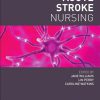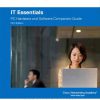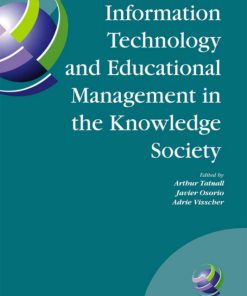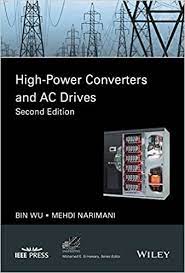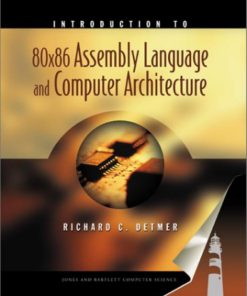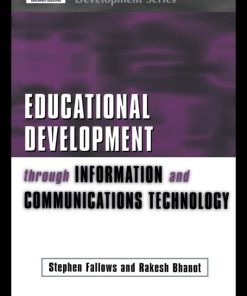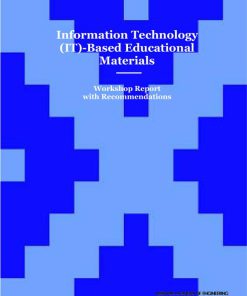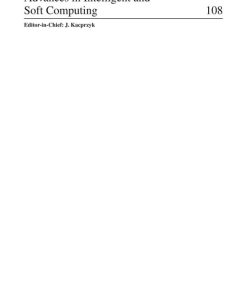(Ebook PDF) Pathways to Institutional Improvement with Information Technology in Educational Management 1st edition by CJ Patrick Nolan, ‎A Fung, ‎Margaret Brown isbn 9780306470066 0306470063 full chapters
$50.00 Original price was: $50.00.$25.00Current price is: $25.00.
Authors:C. J. P. Nolan, A. C. W. Fung, M. A. Brown (auth.), C. J. Patrick Nolan, Alex C. W. Fung, Margaret A. Brown (eds.) , Series:Education [136] , Author sort:C. J. P. Nolan, A. C. W. Fung, M. A. Brown (auth.), C. J. Patrick Nolan, Alex C. W. Fung, Margaret A. Brown (eds.) , Languages:Languages:eng , Published:Published:May 2001 , Publisher:KLUWER ACADEMIC PUBLISHERS
(Ebook PDF) Pathways to Institutional Improvement with Information Technology in Educational Management 1st edition by CJ Patrick Nolan, A Fung, Margaret Brown – Ebook PDF Instant Download/Delivery. 9780306470066, 0306470063
Instant download Full Chapter of Pathways to Institutional Improvement with Information Technology in Educational Management 1st edition after payment
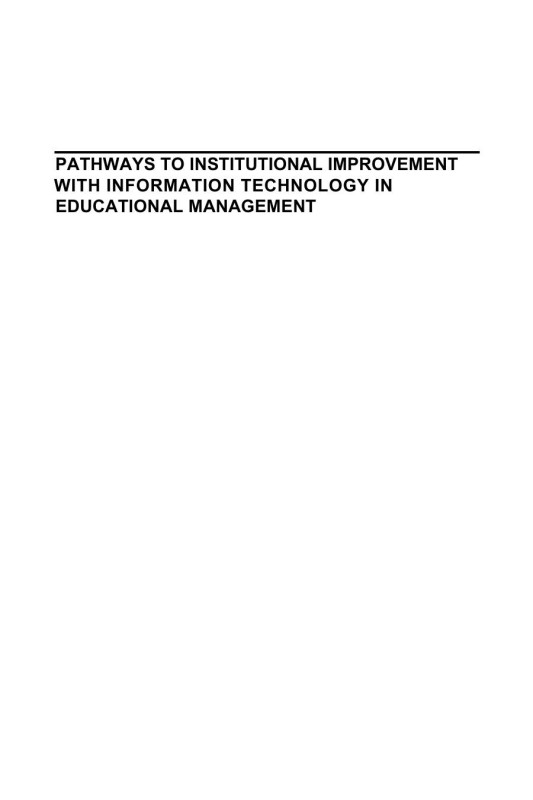
Product Details:
ISBN 10: 0306470063
ISBN 11: 9780306470066
Author: C.J. Patrick Nolan, A. Fung, Margaret Brown
Pathways to Institutional Improvement with Information Technology in Educational Management
IFIP TC3/WG3.7 Fourth International Working Conference on Information Technology in Educational Management July 27–31, 2000, Auckland, New Zealand
Table of Contents:
- 1. BACKGROUND
- 2. CONTEXT
- 3. STRUCTURE
- 3.1 Models for supporting and enhancing professionalpractice
- 3.2 CSIS models and designs
- 3.3 Evaluation of system effects
- 3.4 Making a Difference through training and professionaldevelopment
- ACKNOWLEDGEMENTS
- REFERENCES
- 1 Managing Assessment: Using Technology to Facilitate Change
- 1. INTRODUCTION
- 2. BACKGROUND
- 3. USINGCSIS TO FACILITATE CHANGE
- 4. SUMMARY
- 5. IMPLICATIONS
- REFERENCES
- 2 The Distance Ecological Model to Support Self/Collaborative-Learning in the Internet Environment
- 1. INTRODUCTION
- 2. DISTANCE EDUCATIONAL MODEL BASED ONSCOUTS
- 2.1 Distance EducationalModel
- 2.1.1 Subject-contents unit
- 2.1.2 Teaching knowledge/skills
- 2.1.3 Learningmedia(form)
- 2.2 “Cell” definition
- 3. OUTLINE OF THE TEACHER TRAINING SYSTEM
- 3.1 Training system
- 3.2 Authoring systemfor creating and editing a “cell”description
- 4. CONCLUSION
- REFERENCES
- 3 Educational Centres as Knowledge Organisations Training Future Knowledge Workers: The Role of IT
- 321. INTRODUCTION
- 2. KNOWLEDGE AND INFORMATION TECHNOLOGY
- 3. INFORMATION TECHNOLOGY: A TOOL FOR KNOWLEDGE MANAGEMENT
- 4. THE ROLE OFTHEEDUCATIONALSYSTEM
- 5. AN EDUCATIONAL FRAMEWORK FOR IT
- 6. ANEWVISION FOR EDUCATIONAL CENTRES
- 7. CONCLUSIONS
- REFERENCES
- 4 Developing SoftwareforSchoolAdministration and Management
- 1. INTRODUCTION
- 2. WHY FLEXIBILITY?
- 2.1 BusinessRulesandFlexibility
- 3. TRADITIONAL APPROACHES TOFLEXIBILITY ANDADAPTABILITY
- 3.1 Parameterisation
- 3.2 UsingDatabaseMechanisms
- 4. BUSINESS RULES APPROACH
- 5. BUSINESS RULES ASSOCIATED TECHNOLOGIES
- 5.1 Database-IndependentTools
- 5.2 Server-Based Tools
- 5.3 Rule-Based Systems
- 6. SUMMARY
- REFERENCES
- 5 Open ITEM Systems are Good ITEM Systems
- 1. INTRODUCTION
- 2. SYSTEMS FOR RECORDING STUDENT ABSENCES
- 3. PROBLEMSWITHNON-INTEGRATEDFUNCTIONAL SYSTEMS
- 4. WHO ‘OWNS’ THE ITEM SYSTEM?
- 5. ISSUES OFDATAREDUNDANCY, CLOSEDSYSTEMS AND INTEGRATION
- 6. PREDICTING EACH SCHOOL’S FUTUREINFORMATION NEEDS
- 7. ALTERNATIVE APPROACHES ANDRECOMMENDATIONS
- 8. CONCLUSION
- REFERENCES
- 6 Information Systems for Leading and ManagingSchools: Changing the Paradigm
- 1. INTRODUCTION
- 2. PURPOSE
- 3. METHOD
- 4. BACKGROUND
- 5. LEARNING COMMUNITIES IN ACTION
- 6. CASE STUDIES
- 6.1 School One
- 6.2 School Two
- 6.3 School Three
- 7. CONCLUSIONS
- REFERENCES
- 7 CSIS Usage in School Management: A Comparison of Good and Bad Practice Schools
- 1. INTRODUCTIONAND PROBLEM STATEMENT
- 2. THEORETICAL FRAMEWORK
- 3. METHOD
- 4. RESULTS
- 4.1 Extent of managerial use
- 4.2 Factors promoting managerial use
- 4.3 School management attitude
- 4.4 Extent of training
- 4.5 Internal support
- 4.6 Consultation on educational and administrative matters
- 5. CONCLUSION
- 5.1 Recommendations
- REFERENCES
- 8 HasaDecade ofComputerisationMade a Difference in School Management?
- 1. INTRODUCTION
- 2. METHODOLOGY
- 2.1 The SIMS system
- 2.1.1 A brief description of SIMS modules
- 3. RESULTS
- 3.1 Frequency of modules used
- 3.2 SIMS use in previous case studies
- 3.3 Number of hours spent per week using SIMS
- 3.4 Workload and stress using SIMS compared to previoussystems
- 3.5 Modules used in making managementdecisions
- 3.6 Respondents’ experience using computers
- 3.7 System quality
- 3.8 Training in system use
- 3.9 Access to help
- 3.10 Levels ofuser satisfaction
- 3.11Users’ comments
- 4. CONCLUSIONS
- 4.1 The changing role of the information system ineducational organisations
- 4.2 Changesinsystem useandperception overthe decade
- 4.3 User requirements and system functionality
- 4.4 The survey population
- 4.5 Summary
- 4.6 Further analysis
- REFERENCES
- 9 SAMS in Hong Kong Schools: A User Acceptance Audit
- 1.INTRODUCTION
- 1.1 Background of the SAMs project
- 1.2 The theoretical framework of the research
- 1.3 The research study
- 2. RESEARCHMETHOD
- 2.1 Data collection
- 2.1.1 PhaseI quantitative datacollection
- 2.1.2 Phase II qualitative data collection
- 2.1.3 Phase III quantitative data collection
- 3. FINDINGS FROMTHEPHASEIIISURVEY
- 3.1 The extent of SAMS use in Hong Kong schools
- 3.2 Users’ satisfaction with SAMS
- 3.3 Users’ difficulties inimplementingSAMS
- 4. FINDINGS FROM THE QUALITATIVE INTERVIEWS
- 4.1 Factors that promote the use of SAMS
- 4.1.1 Direct motivation
- 4.1.2 Indirect motivation
- 4.2 Factors that hinder the implementation and use of SAMS
- 4.2.1 Unwillingness to transfer (to abandon existing system)
- 4.2.2 Staff resistance
- 4.2.3 Felt need forchange
- 4.2.4 School readiness
- 4.2.5 System reliability and hardware performance
- 4.2.6 System design
- 4.2.7 System support
- 4.2.7.1 Hotline support
- 4.2.7.1 Hotline support
- 4.2.7.2 Hardware support
- 4.2.7.3 User manual support
- 4.2.8 SAMS training
- 4.3 Users’ suggestions forimprovement
- 4.3.1 Effectiveness of the system
- 4.3.2 Effectiveness of the support
- 5. CONCLUSION
- 5.1 The future of SAMS
- REFERENCES
- 10 HowshouldSchoolManagersbeTrained for Managerial School Information System Usage?
- 1. INTRODUCTION AND PROBLEM STATEMENT
- 2. RESULTS
- 3. CONCLUSION
- REFERENCES
- 11 Supporting UK Teachers through the National Grid for Learning
- 1. INTRODUCTION
- 2. BACKGROUND
- 3. THE NATIONAL GRID FOR LEARNING (NGfL)
- 3.1 Infrastructure
- 3.2 Content
- 3.3 Practice
- 3.4 The NGfL site (https://www.ngfl.gov.uk/ngfl/index.html)
- 3.5 Virtual Teachers’ Centre (VTC)
- 3.6 LearningResourceIndex(LRI)(https://www.ngfl.gov.uk/ng/Iri/index.html)
- 3.7 Becta(https://www.becta.org.uk)
- 4. TEACHERS’INITIALRESPONSESTOTHENGfL
- 4.1 Are yousatisfied with the equipment andsoftware
- 4.2 Do many staff use the Internet?
- 4.3 Do staff feel confident that they can access usefulmaterial on the Internet?
- 4.4 Do staff use email?
- 4.5 Which staff regularly use the WWWin school?
- 5. CONCLUSION
- REFERENCES
- APPENDIX 1 – VIRTUALTEACHER CENTRES
People also search:
pathways to innovation
institutional improvement
institutional improvement plan
pathways to improvement
pathways to inclusion
You may also like…
eBook PDF
(Ebook PDF) Education and Educational Technology 1st edition by Yuanzhi Wang full chapters


